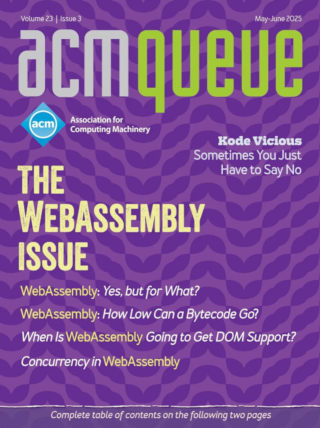
Leaking Space:
Eliminating memory hogs
A space leak occurs when a computer program uses more memory than necessary. In contrast to memory leaks, where the leaked memory is never released, the memory consumed by a space leak is released, but later than expected. This article presents example space leaks and how to spot and eliminate them.
Adopting DevOps Practices in Quality Assurance:
Merging the art and science of software development
Software life-cycle management was, for a very long time, a controlled exercise. The duration of product design, development, and support was predictable enough that companies and their employees scheduled their finances, vacations, surgeries, and mergers around product releases. When developers were busy, QA (quality assurance) had it easy. As the coding portion of a release cycle came to a close, QA took over while support ramped up. Then when the product released, the development staff exhaled, rested, and started the loop again while the support staff transitioned to busily supporting the new product.
Agile and SEMAT - Perfect Partners:
Combining agile and SEMAT yields more advantages than either one alone
Today, as always, many different initiatives are under way to improve the ways in which software is developed. The most popular and prevalent of these is the agile movement. One of the newer kids on the block is the SEMAT (Software Engineering Method and Theory) initiative. As with any new initiative, people are struggling to see how it fits into the world and relates to all the other things going on. For example, does it improve or replace their current ways of working? Is it like lean, which supports and furthers the aims of the agile movement, or is it more like waterfall planning, which is in opposition to an agile approach?



